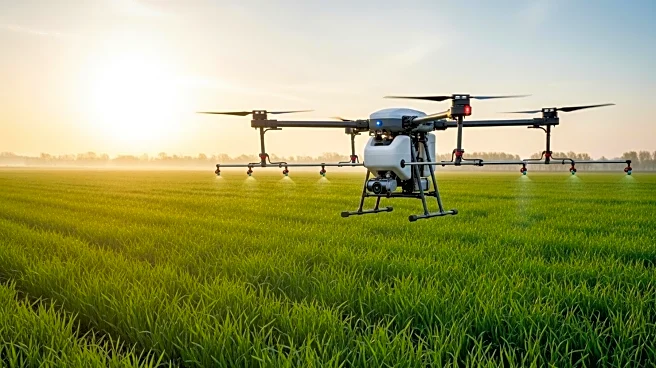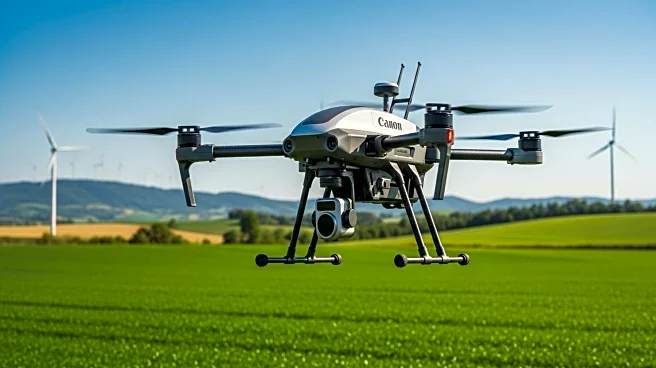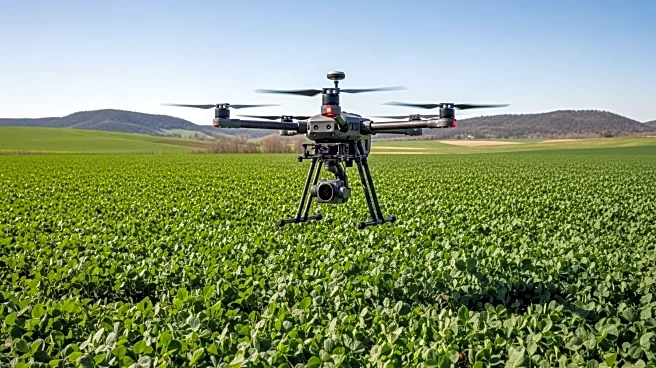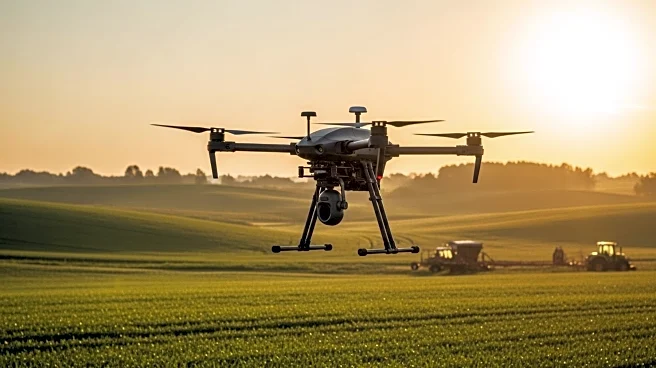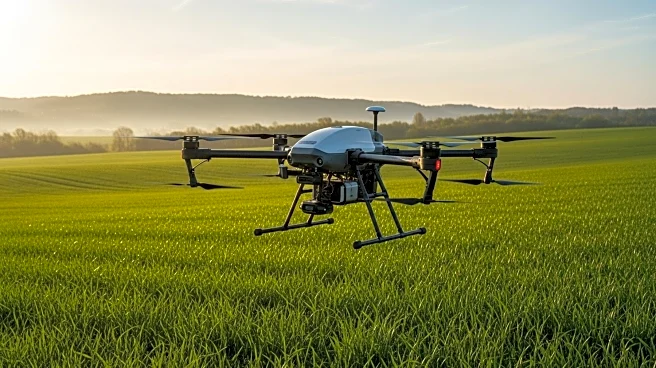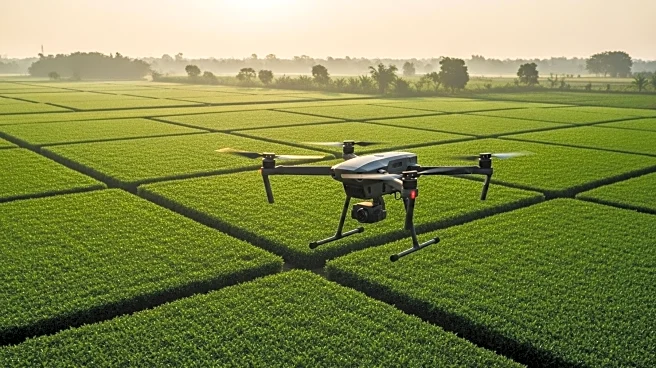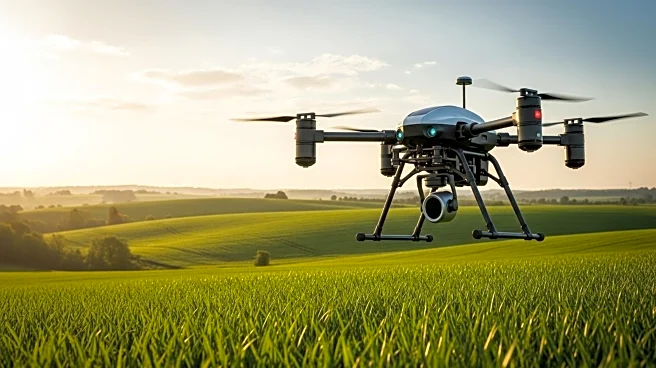What is the story about?
What's Happening?
In Joshua, Texas, the average price of a 20-litre agriculture spraying drone is projected to be around $15,000 in 2025. These drones are revolutionizing crop management by offering precision spraying of fertilizers, pesticides, and herbicides, enhancing efficiency and sustainability in farming operations. Equipped with advanced GPS navigation, AI-driven path optimization, and precision spray nozzles, these drones minimize chemical wastage and improve crop health. The adoption of such technology is expected to expand rapidly in high-yielding regions like Joshua, TX, offering significant operational efficiencies and environmental benefits.
Why It's Important?
The integration of drone technology in agriculture represents a significant shift towards more sustainable and efficient farming practices. By reducing labor costs and chemical usage, these drones offer economic benefits to farmers, potentially increasing crop yields and reducing environmental impact. The technology also supports sustainable certifications, which are increasingly important for market access. As drone prices stabilize or decrease, more farmers may adopt this technology, leading to widespread changes in agricultural practices and potentially influencing policy and regulatory frameworks.
What's Next?
As drone technology continues to advance, farmers can expect improvements in features such as AI-driven disease detection and variable rate spraying. The combination of drones with satellite monitoring tools could further enhance precision agriculture, offering real-time insights and proactive farm management. Regulatory compliance will remain a key consideration, with ongoing developments in UAV operation standards. The market for agricultural drones is likely to grow, with manufacturers focusing on enhancing capabilities and reducing costs to meet the needs of diverse farming operations.
AI Generated Content
Do you find this article useful?
